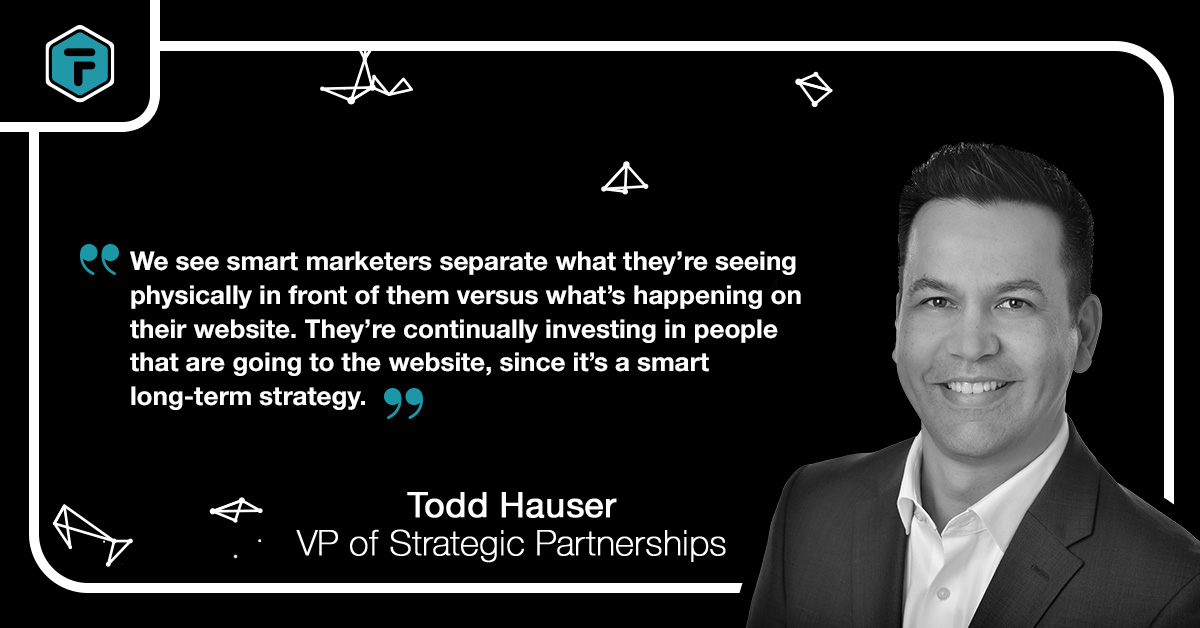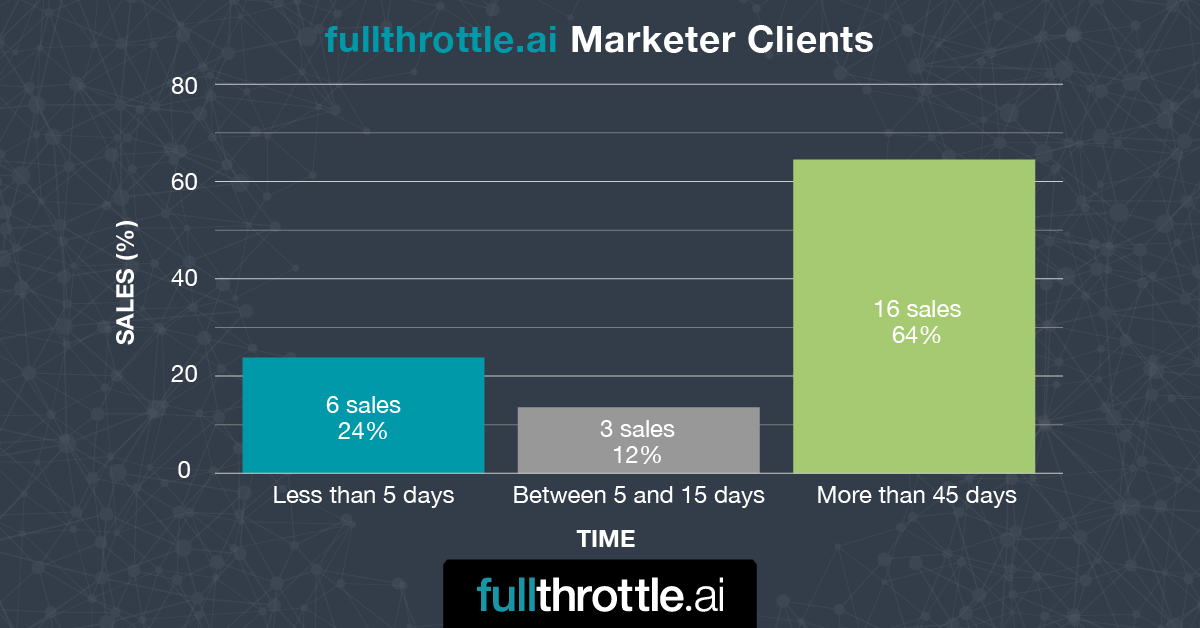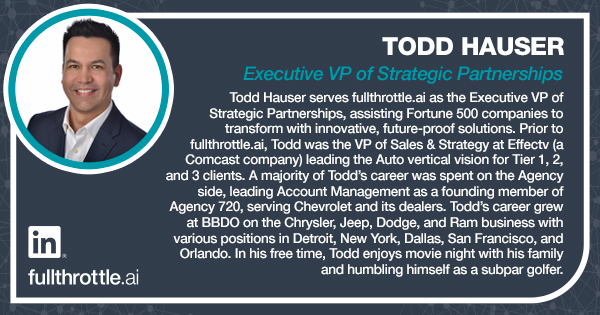
How To Traverse the Changing Advertising and Marketing Landscape
by Todd Hauser, EVP of Strategic Partnerships
We talk to a lot of marketers who are looking to better understand the cookieless landscape, first-party data collection, and how to traverse all the things that are changing so quickly in the advertising and marketing industry.
As we’ve talked to these brands, agencies, and media companies, there are a few things that have stood out. Here are the things we’ve found smart marketers are doing with their 2023 plan.
1. Prioritizing Your Online Storefront/Virtual Showroom
The first thing people tend to do in a financial crisis is shut their media plan down.
When the economic conditions are tough as they are now, with everything happening around us, and/or you’re in a position where you or your client has very little product to sell, businesses will lean towards shutting their media plan down.
When you turn it off due to a lack of product right in front of you, what’s really happening is you’re ignoring a good faction of shoppers or info gathers on your virtual storefront (website).
You should separate these shoppers out, since there is still opportunity in that virtual storefront for you to build a relationship with those consumers. Essentially, you need to separate the ashes from the amber. You shouldn’t just throw everything out together.
We see smart marketers separate what they’re seeing physically in front of them versus what’s happening on their website. They’re continually investing in people that are going to the website, since it’s a smart long-term strategy.
You’ve invested so much time and money into driving traffic to the website. Whether or not you have exactly what they want at this exact point in time isn’t as important as building and harvesting that relationship. So, why stop? Why put up a wall and not build an opportunity for those people that are thinking long-term?
For most of our clients on our technology, when we go in to look at the people who have bought or serviced from our clients and the timeline that they were on that site, a majority of them are more than 30 to 45 days on the site until purchase.
At least 20 to 25% of all the people that have bought or serviced with our client have been on the site more than 45 days.
Here’s an example of a fullthrottle.aiTM client:

So, rather than shut all your marketing and media down, continue to build a relationship with them, even if you salvage only 20 of those individuals. You can salvage those relationships, if they’re on a longer selling cycle, until you get product back.
Prioritize your virtual showroom over what you see visibly. Segment the people that are in-market shoppers today from the ones that are also gathering information (“virtual window shoppers”).
Our technology can do that, since we provide propensity to buy scores. We can see who’s really shopping, who’s ready to buy, and who’s just looking around.
These smart marketers we’re speaking with are not lumping all prospective buyers into one bucket. These marketers are separating them out and building a relationship with the ones that are longer term. For the most part, these marketers will have products available, once these shoppers are ready to buy.
Since the business climate isn’t focused on advertising spend for the instantaneous sell, focusing on longer-term communication is critical to nurture tomorrow’s potential sale.
Smart Marketers Re-Prioritizing Media Spend
Hand-in-hand with the virtual showroom, we’re also seeing smart marketers re-prioritizing their media spend. If they know they need to cut back because they don’t have the product, they can re-arrange spending. They’re less likely to spend money on conquesting, if they know they don’t have products AND already have people interested in their products.
It is also important that these marketers then engage with these shoppers. Marketers need to separate the shoppers from those searching and those ready to buy. By doing this, they are elongating the marketing cycle with the sales cycle. These are people who are going to buy down the road. Let’s invest that way.
2. Building First-Party Data
The second thing we see smart marketers focusing on is truly building their first-party data.
While many businesses have first-party data, what they’re now recognizing, when they look at their first-party data, is that it’s not whole. There are pieces missing.
For example, if this person bought from me, I have their first-party data. I may know who they are by name, what they purchased, and their email address—but I don’t know where they live. This other individual, I may know what they bought and I have their phone number, but I don’t have their email address. Or I have their email address and it’s wrong.
So, how do we do a better job of filling the gaps?
With the support of our patented technology, fullthrottle.aiTM brings you unique, novel, first-party data of in-market shoppers in real time. We’re able to do this, since our starting point is on our client’s website.
As anonymous shoppers are coming onto that virtual storefront, we’re able to determine who they are and where they live, from an identity perspective. So, we can easily enhance their first-party data by adding another layer to it.
Then, our platform gives them the opportunity to ingest that first-party data, depending on what the clients or agencies are attempting to do. Additionally, you can pull the media levers you want to pull OR you can allow us to do it, all within the platform—identify and market directly to the shoppers.
We’re helping marketers and businesses grow their first-party data and we’re seeing these smart marketers focus specifically on households as the identifying data point. When businesses focus on households with our technology, they’re taking advantage of building an Immersive Household® of all the devices and all the people in that household.
An Immersive Household® is built around the marketing premise that more than one person in that household has an opinion and a say in that buying decision.
3. Paying Attention to Real, True Attribution
Another trend we’re seeing is smart marketers focusing on real, true attribution.
In business terms, companies are most interested in sales or service––how many did it net me in the end?
Smart marketers are looking past the basic KPI math––click-through rates and time on site. Reliance on these two KPIs has led to bad digital business tactics.
The ability to see ROI––without necessarily assigning black and white credit or 100% proof to an effort––is crucial to the sales process. Seeing how particular initiatives played a part in the sales process is a top focus of smart marketers.
Starting at the sale and stitching together the customer path and the buyer journey provides real, true insights that power the next round of media strategies. Additionally, smart marketers are using these customer insights to aid in product development.
With these attribution goals in mind, smart marketers are evolving into data scientists, questioning their current course fearlessly and creating their own first-party data to complement their prescribed walled garden solutions.
How fullthrottle.aiTM Helps Smart Marketers
If you’re looking to focus your marketing strategy for 2023 on prioritizing your virtual storefront, building more first-party data, and measuring true attribution, then fullthrottle.aiTM is the technology for you! We offer brands, agencies, media companies, and publishers several solutions, all to benefit them in their marketing strategies.
As the landscape continues to evolve, we’re here to help guide businesses towards success in a new advertising world. Curious to see what fullthrottle.aiTM can do for you? Schedule your demo here.



